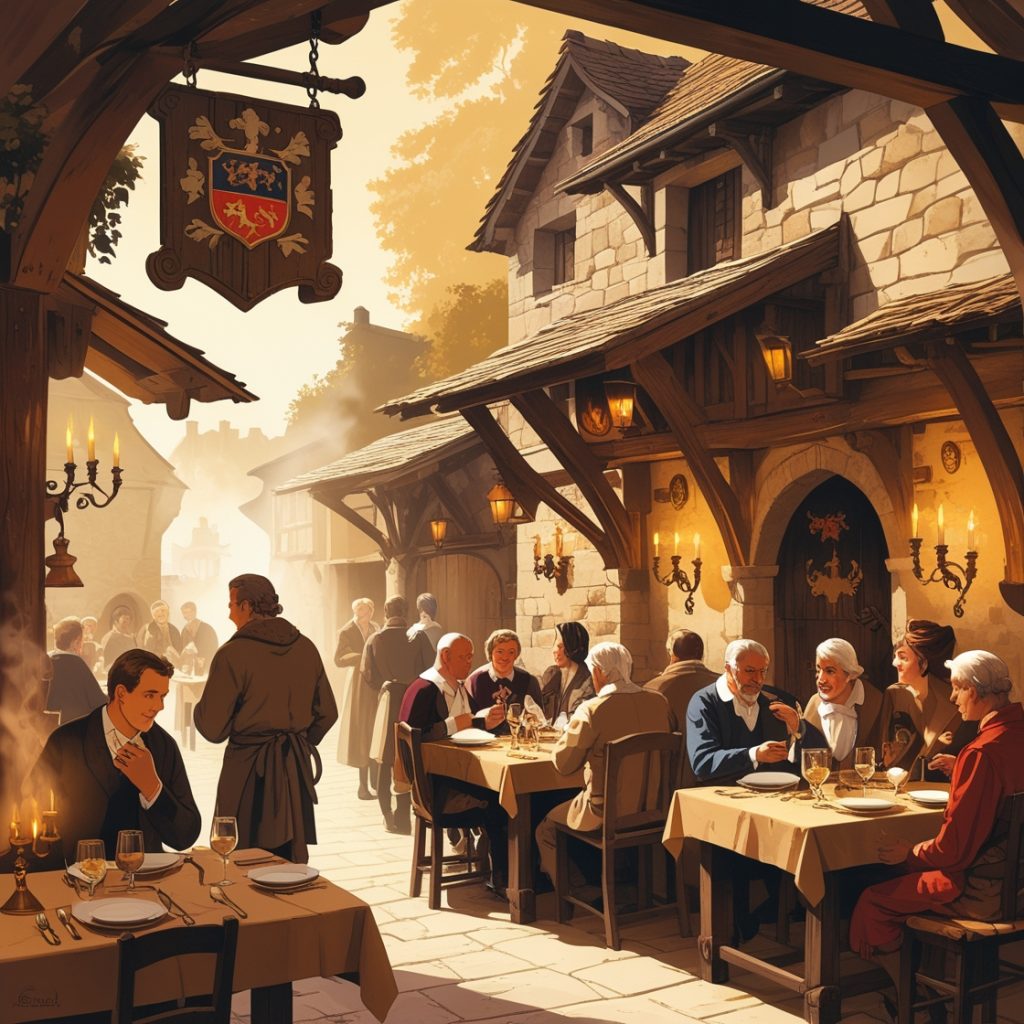Europe is home to some of the world’s oldest and most legendary restaurants, each carrying centuries of history, tradition, and culinary evolution. These establishments serve not only as eateries but as living museums, offering a glimpse into the past. Let’s take a journey through the oldest restaurants in Europe, celebrating their resilience, unique stories, and contributions to the culinary world.
1. St. Peter Stiftskulinarium, Salzburg, Austria (803 AD)
Tucked within the walls of St. Peter’s Abbey in Salzburg, Austria, St. Peter Stiftskulinarium is widely recognized as Europe’s oldest restaurant. Established in 803 AD, it has been serving guests for over 1,200 years. The restaurant’s stunning location in a Benedictine monastery and its beautiful medieval architecture enhance its charm.
St. Peter Stiftskulinarium offers a mix of traditional Austrian dishes and modern culinary creations. Among the most popular items are Wiener Schnitzel and Mozart-inspired desserts. The restaurant has hosted notable figures, including Wolfgang Amadeus Mozart, Christopher Columbus, and even Charlemagne.
2. Sobrino de Botín, Madrid, Spain (1725)
Recognized by the Guinness World Records as the world’s oldest continuously operating restaurant, Sobrino de Botín has been serving customers in Madrid since 1725. Located near Plaza Mayor, this legendary establishment was founded by a French cook named Jean Botín and his wife.
Sobrino de Botín is famed for its traditional Spanish dishes, particularly its roast suckling pig (cochinillo asado) and lamb cooked in a wood-fired oven. The restaurant’s ambiance remains largely unchanged, with its 18th-century charm intact. Writer Ernest Hemingway immortalized Botín in his novel The Sun Also Rises, adding to its global fame.
3. La Tour d’Argent, Paris, France (1582)
Paris’s La Tour d’Argent, founded in 1582, is a historical gem that has served royalty, nobility, and prominent cultural figures. Overlooking the Seine River, this iconic restaurant boasts a rich history intertwined with French gastronomy.
La Tour d’Argent is especially famous for its pressed duck (caneton Tour d’Argent), a dish steeped in tradition and prepared with great ceremony. The restaurant’s wine cellar is legendary, housing over 300,000 bottles, making it a destination for wine enthusiasts as well as food lovers.
4. Zum Franziskaner, Stockholm, Sweden (1421)
In Scandinavia, Zum Franziskaner stands as a beacon of history and tradition. Established in 1421 by German monks, this Stockholm-based restaurant offers an intriguing blend of Swedish and German cuisine.
Zum Franziskaner is well-known for its hearty dishes, such as reindeer stew and smoked fish, as well as its selection of craft beers. Its historical interiors transport visitors back to medieval times, while the welcoming atmosphere reflects the timeless values of hospitality.
5. Honest Burgers, Oxford, UK (1153)
While the term “Honest Burgers” may conjure up images of modern burger joints, in Oxford, England, it’s the name given to an establishment tracing its roots to 1153. Although it has undergone numerous transformations over the centuries, it remains a testament to England’s long history of dining out.
This historical spot specializes in locally sourced ingredients, offering traditional English pies, hearty stews, and a selection of ales brewed nearby. Its rustic charm and historical setting continue to draw visitors from around the world.
6. Piwnica Świdnicka, Wrocław, Poland (1273)
Located in Wrocław, Poland, Piwnica Świdnicka is one of Europe’s oldest beer halls, with records dating back to 1273. Situated beneath the Town Hall, it has been serving locals and travelers for over seven centuries.
This historic venue is known for its hearty Polish cuisine and locally brewed beer. Guests can savor pierogi, żurek (sour rye soup), and traditional sausages in a medieval atmosphere that recalls the city’s rich history.
7. Zur Letzten Instanz, Berlin, Germany (1621)
Berlin’s oldest restaurant, Zur Letzten Instanz, has been a part of the city’s culinary scene since 1621. Located in the historic Mitte district, the restaurant survived wars, political upheavals, and modernization while maintaining its authenticity.
The menu at Zur Letzten Instanz focuses on traditional German fare, such as Eisbein (pork knuckle), sausages, and sauerkraut. Its cozy, timber-framed interior creates a warm and inviting atmosphere, making it a favorite for locals and tourists alike.
8. Tavares, Lisbon, Portugal (1784)
In Lisbon, Tavares has been dazzling diners since 1784. Known for its opulent décor, including gilded mirrors and chandeliers, this restaurant exemplifies Portuguese elegance.
Tavares specializes in fine dining, offering a menu that combines traditional Portuguese ingredients with modern techniques. Dishes like bacalhau (salt cod) and seafood risotto showcase the region’s rich maritime heritage.
9. White Horse Tavern, Newport, Rhode Island (1673)
Although not European, it’s worth mentioning the White Horse Tavern in Newport, Rhode Island, which dates back to 1673. This establishment reflects the influence of European settlers and stands as America’s oldest restaurant.
10. Gröna Lunds Tivoli, Stockholm, Sweden (1883)
Though primarily known as an amusement park, Gröna Lunds Tivoli also offers dining options that date back to its founding in the late 19th century. It combines traditional Scandinavian cuisine with stunning waterfront views.
Why Do These Restaurants Endure?
The longevity of these establishments can be attributed to several factors:
- Historical Significance: Many of these restaurants are tied to major historical events or figures, giving them a unique appeal.
- Consistency: They have preserved their culinary traditions while adapting to modern tastes.
- Ambiance: Their historical interiors and architecture create a timeless atmosphere.
- Quality: High-quality food and service have ensured a loyal clientele over the centuries.
Conclusion
Europe’s oldest restaurants are more than places to dine; they are portals to the past, offering a taste of history and culture. From the medieval monasteries of Austria to the bustling streets of Madrid, these establishments remind us of the enduring power of food to bring people together across generations.
Visiting these historic eateries is not just about the meal—it’s about experiencing a piece of history that continues to thrive in the modern world.


